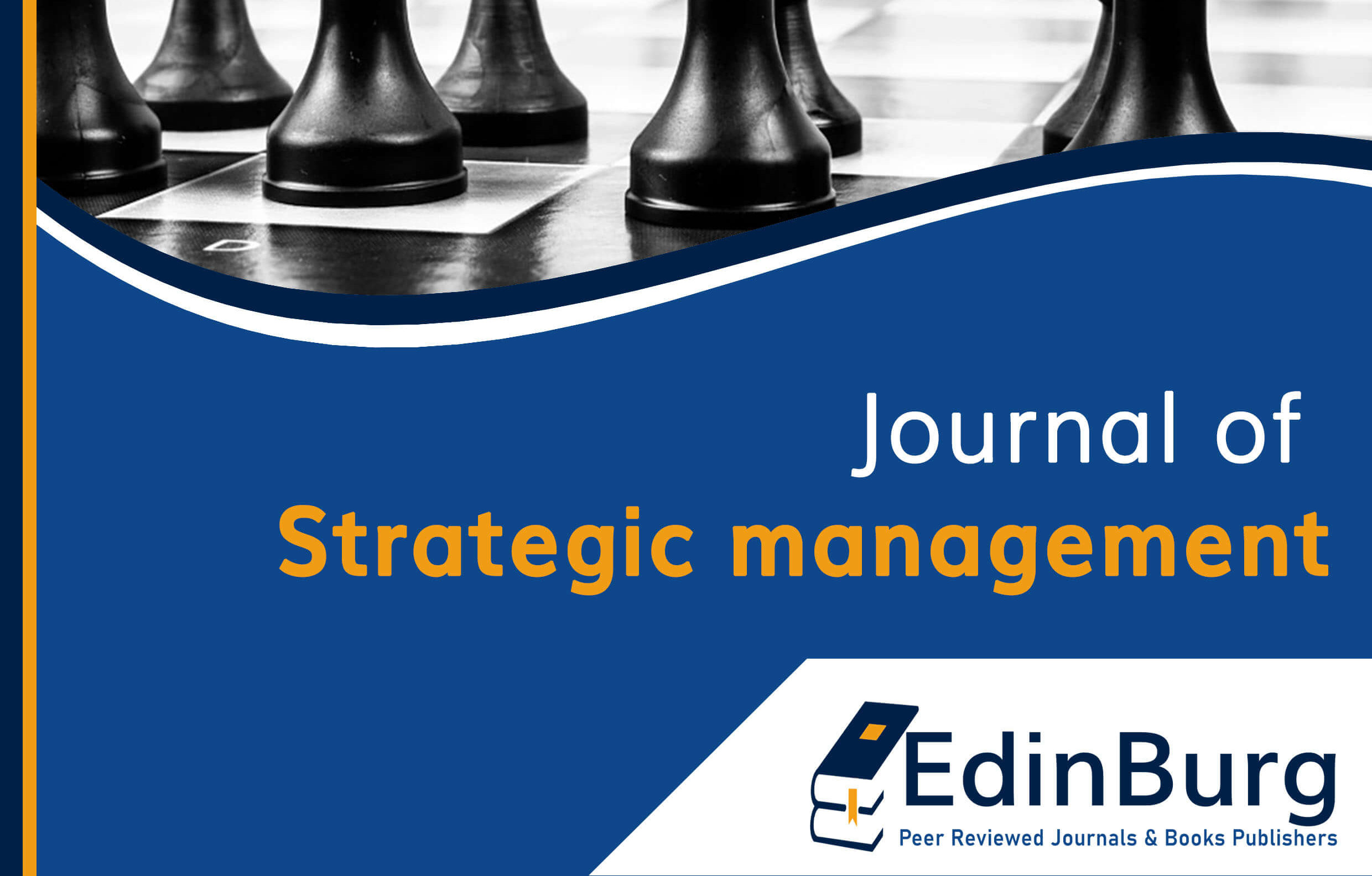Effect of Strategic Scanning on Performance of NGOs in Samburu County, Kenya
DOI:
https://doi.org/10.70619/vol4iss2pp13-21Keywords:
Strategic Scanning, Performance of NGOs, Samburu County, KenyaAbstract
Strategic scanning is a key influencer that enhanced an organizational ability to deliver services and programs effectively. Despite the NGOs in Samburu County adopting various strategic planning processes such as strategic scanning, there have been deteriorating performance in recent years. Therefore, the purpose of the study was to establish the effect of strategic scanning on performance of NGOs in Samburu County, Kenya. The study adopted a descriptive research design, encompassing all 31 NGOs within the county. Notably,262 employees within these organizations were involved in the study. A sample size of 158 employees were selected using stratified random sampling where structured questionnaires were used to gather insights from these employees. Further, the study undertook a pre-testing and selected a pilot sample of 16 employees from three NGOs in Isiolo County to ensure the questionnaire's clarity and relevance. The correlation coefficient for strategic scanning r=0.505 at α < 0.009 and 99% significance level. Therefore, since the correlation coefficient was less than 1 and p-value was less than 0.05, the study rejected the null hypothesis. The study concluded that majority of NGOs wasted a lot of resources on strategies that they would have benchmarked with their competitors. This was attributed to poor strategic scanning of the environment to note what was working and what was not among different stakeholders such as their competitors. A continued non-benchmarked strategy would be a recipe for failure and reduced performance. The recommendation is that NGO management should liaise with operations staff for information on what their competitors were doing in regard to strategic plan implementation. In the same line of thought the management should set policies that allow flexibility on strategy changes to facilitate benchmarking practices. This would improve resonance of established strategic plans that were impactful, time-bound, and realistic in implantation stage.
References
Aborass, N. (2021). The impact of strategic planning on the performance of non-governmental organizations in the new century: A review. European Journal of Digital Economy Research, 2(1), 33-41. https://ejderhub.com/index.php/ejder/article/download/26/37/149
Alosani, M.S., & Yusoff, R. (2020). The effect of innovation and strategic planning on enhancing organizational performance of Dubai Police. Innovation & Management Review, 17(1), 1-24. http://dx.doi.org/10.1108/INMR-06-2018-0039
BertelsmannStiftung (2022). South Korea report: Sustainable governance indicators. https://www.sgi-network.org/docs/2022/country/SGI2022_South_Korea.pdf
Bhandari, K. R., Ranta, M., & Salo, J. (2022). The resource‐based view, stakeholder capitalism, ESG, and sustainable competitive advantage: The firm's embeddedness into ecology, society, and governance. Business Strategy and the Environment, 31(4), 1525-1537. http://dx.doi.org/10.1002/bse.2967
Foster, D. L., Yandle, B., & Bhattarai, M. (2019). Strategic planning for nonprofits: A practical guide and workbook. Springer.
George, B., Walker, R. M., & Monster, J. (2019). Does strategic planning improve organizational performance? A meta‐analysis. Public Administration Review, 79(6), 810-819. https://doi.org/10.1111/puar.13104
Hasselskog, M. (2023). Exploiting international development ideals. The Rwandan government’s approach to local participation in light of its exercise of national ownership. Forum for Development Studies, 50(3), 371-395. https://doi.org/10.1080/08039410.2023.2230203
Kariuki, D.N., Kitonga, D.M, & Arasa, R. (2023). Influence of strategy formulation on the performance of catholic parishes in Kenya. Journal of African Studies and Development, 15(1), 1-13, http://dx.doi.org/10.5897/JASD2022.0668
Kebede, K. (2020). The effect of strategic planning on organizational performance in the case of NIB insurance share company [Doctoral dissertation, St. Mary’s University]. Ethiopia. http://repository.smuc.edu.et/bitstream/123456789/5622/1/Kalkidan%20Kebede.pdf
Kigenza, B. & Irechukwu, E., N. (2023). Strategic planning and organizational performance in non-profit organizations in Rwanda: A case of World Vision, Kigali, Rwanda. Journal of Strategic Management, 7(2), 90-110. https://doi.org/10.53819/81018102t3081
Madume, W.C., Okereke, E.J., & Omojefe, G.O. (2024). Strategic planning and organizational performance of manufacturing firms in Rivers State, Nigeria. Asian Journal of Economics, Finance and Management, 6(1), 63-73. https://globalpresshub.com/index.php/AJEFM/article/view/1943
Maina, J. (2021). The role of non-governmental organizations in humanitarian development in Africa. A case study Kenya Red CCross in Kenya [Master’s Thesus, University of Nairobi]. Kenya. http://erepository.uonbi.ac.ke/bitstream/handle/11295/160157/Maina_The%20Role%20of%20Non-governmental%20Organizations%20in%20Humanitarian%20Development%20in%20Africa.pdf?sequence=1
Mugenda, O.M., & Mugenda, A.G. (2003). Research methods: Quantitative and qualitative approaches. ACT
NGO Board (2021). Annual NGO sector report 2021/2022. http://ngobureau.go.ke/wp-content/uploads/2023/06/AR-Booklet.pdf
Nkemchor, E. M., & Ezeanolue, E. T. (2021). Effect of Strategic Management on organizational performance in Tertiary institutions in Delta State, Nigeria. International Journal of Innovative Social Sciences & Humanities Research, 9(3), 75-87. https://seahipaj.org/journals-ci/sept-2021/IJISSHR/full/IJISSHR-S-8-2021.pdf
Nyaboga, P., & Mutua, E. (2023). Strategic scanning and organizational resilience: A study of NGOs in Samburu County, Kenya. Journal of Nonprofit and Voluntary Sector Quarterly, 52(1), 134-147. http://dx.doi.org/10.1177/08997640221070599.
Obaid, N. (2022). Impact of strategic planning and direction on organizational performance in private Higher Education institutions in Nangarhar, Afghanistan. International Journal of Research Publications (IJRP. ORG), 93(1), 372-389. http://dx.doi.org/10.47119/IJRP100931120222749
Okwuise, U. Y. (2023). Strategic planning and performance of health establishments in delta state: Moderating role of organizational culture. International Journal of Management & Entrepreneurship Research, 5(2), 99-114. http://dx.doi.org/10.51594/ijmer.v5i2.434
Sadq, Z. M., Ahmad, B. S., Faeq, D. K., & Muhammed, H. O. (2020). The effect of strategic planning on entrepreneurship strategy requirements (The case of private Hospitals in Iraqi Erbil City). International Journal of Multicultural and Multireligious Understanding, 7(10), 147-164. https://ijmmu.com/index.php/ijmmu/article/download/2134/2458
Van Zyl, W. H., Claeyé, F., & Flambard, V. (2019). Money, people, or mission? Accountability in local and non-local NGOs. Third World Quarterly, 40(1), 53-73. http://dx.doi.org/10.1080/01436597.2018.1535893
World Food Programme (2022). South Sudan country strategic plan (2023–2025). https://executiveboard.wfp.org/document_download/WFP-0000142938
Downloads
Published
How to Cite
Issue
Section
License
Copyright (c) 2024 Kelvin Saruni Lalampaa, Dr. Nancy Rintari, PhD, Adel Kanyiri

This work is licensed under a Creative Commons Attribution-NonCommercial-NoDerivatives 4.0 International License.





